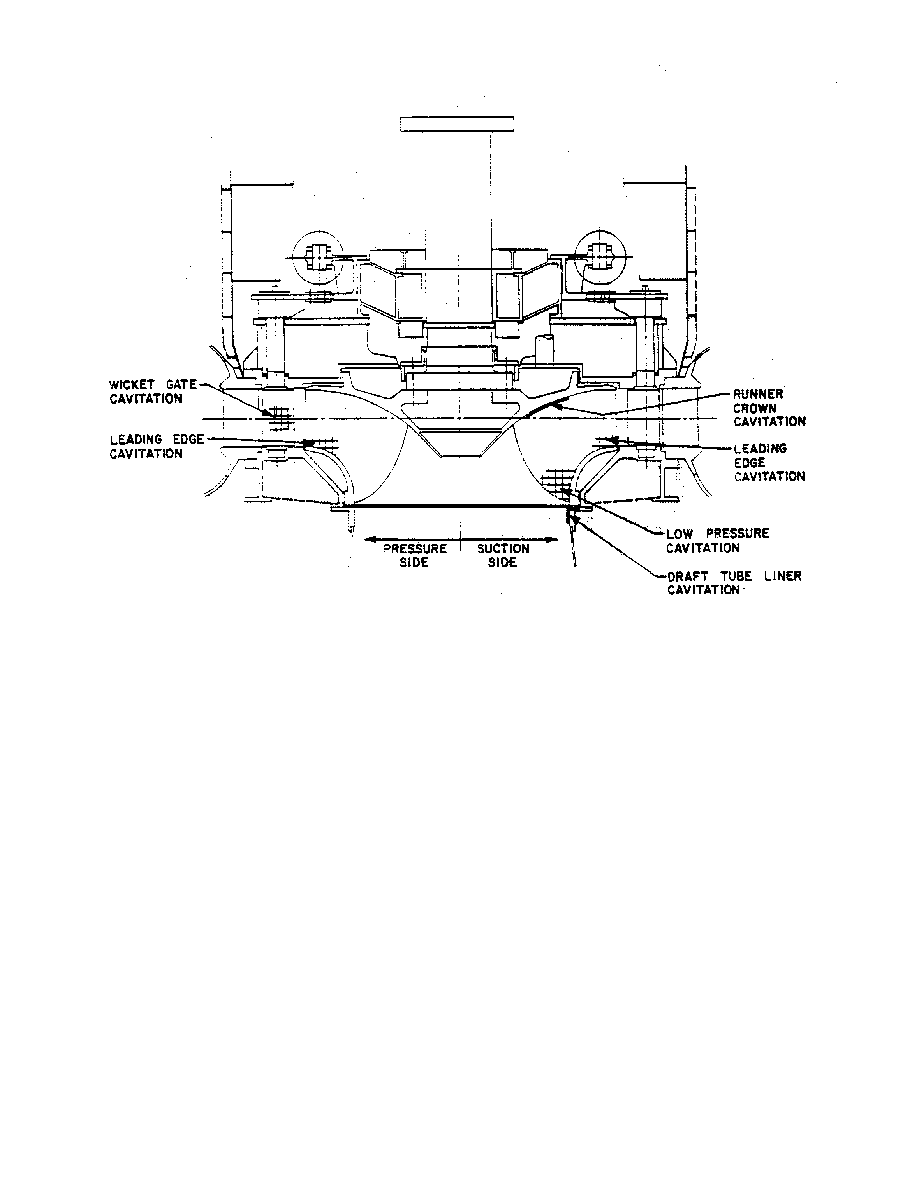

lighting of high intensity should be provided. If weld procedure incorporates high
pre- or post-heat, insulated blankets are necessary to protect the personnel.
pre- or post-heat, insulated blankets are necessary to protect the personnel.
"Composition of Base Material. When planning cavitation repairs, it is important
to know the chemistry of the base material. For newer units, the ASTM
specification is usually known. The exact composition may also be available
from foundry/mill test records. If the composition of the material is not known, a
chemical analysis should be made from a small sample of the runner or
component being repaired.
to know the chemistry of the base material. For newer units, the ASTM
specification is usually known. The exact composition may also be available
from foundry/mill test records. If the composition of the material is not known, a
chemical analysis should be made from a small sample of the runner or
component being repaired.
"Weld Materials. The recommendations for weld materials for cavitation pitting
are as follows:
are as follows:
Turbine Components with Carbon Steel Base Material: Areas where the
depth of weld after surface preparation is greater than 3/8 inch (10 mm)
should be built up to 3/8 inch (10 mm) depth with E7018 mild steel weld
material (low moisture type). The remainder of the area, including other
areas with depth of 3/8 inch (10 mm) or less, should be filled with
300 series austenitic stainless steel material. The first pass of material
over the carbon steel should be 309 stainless, the remainder 308
stainless.
depth of weld after surface preparation is greater than 3/8 inch (10 mm)
should be built up to 3/8 inch (10 mm) depth with E7018 mild steel weld
material (low moisture type). The remainder of the area, including other
areas with depth of 3/8 inch (10 mm) or less, should be filled with
300 series austenitic stainless steel material. The first pass of material
over the carbon steel should be 309 stainless, the remainder 308
stainless.
Stainless steel material should not be used in areas of deep cavitation
because of the increased possibility of blade distortion resulting from the
difference in coefficient of thermal expansion between the stainless and
carbon steel.
because of the increased possibility of blade distortion resulting from the
difference in coefficient of thermal expansion between the stainless and
carbon steel.
The increase ferrite level in 309 stainless reduces the possibility of hot-
short cracking (micro fissuring), and for this reason 309 is used as a first
pass over the carbon steel. For minor repairs where the plant owner does
not wish to use two types of weld material, only 309 may be used.
short cracking (micro fissuring), and for this reason 309 is used as a first
pass over the carbon steel. For minor repairs where the plant owner does
not wish to use two types of weld material, only 309 may be used.
Martensitic Stainless Steel (CA-6NM): In areas of low stress levels (see
exceed 10 percent of the material thickness, repairs should be made with
308 austenitic stainless steel weld material.
308 austenitic stainless steel weld material.
In areas of high stress, where the depth of pitting exceeds 10 percent of
the material thickness, the turbine manufacturer should be consulted for
recommended weld materials. For this, a 410 Ni-Mo weld material may
be appropriate because of similar chemical and physical properties as the
base material. However, this material requires high preheat to prevent
hydrogen-induced cracking and post-weld heat treatment at 1000 F (540
C) to temper the weld metal. Studies (1) have shown that
the material thickness, the turbine manufacturer should be consulted for
recommended weld materials. For this, a 410 Ni-Mo weld material may
be appropriate because of similar chemical and physical properties as the
base material. However, this material requires high preheat to prevent
hydrogen-induced cracking and post-weld heat treatment at 1000 F (540
C) to temper the weld metal. Studies (1) have shown that
repair with
14